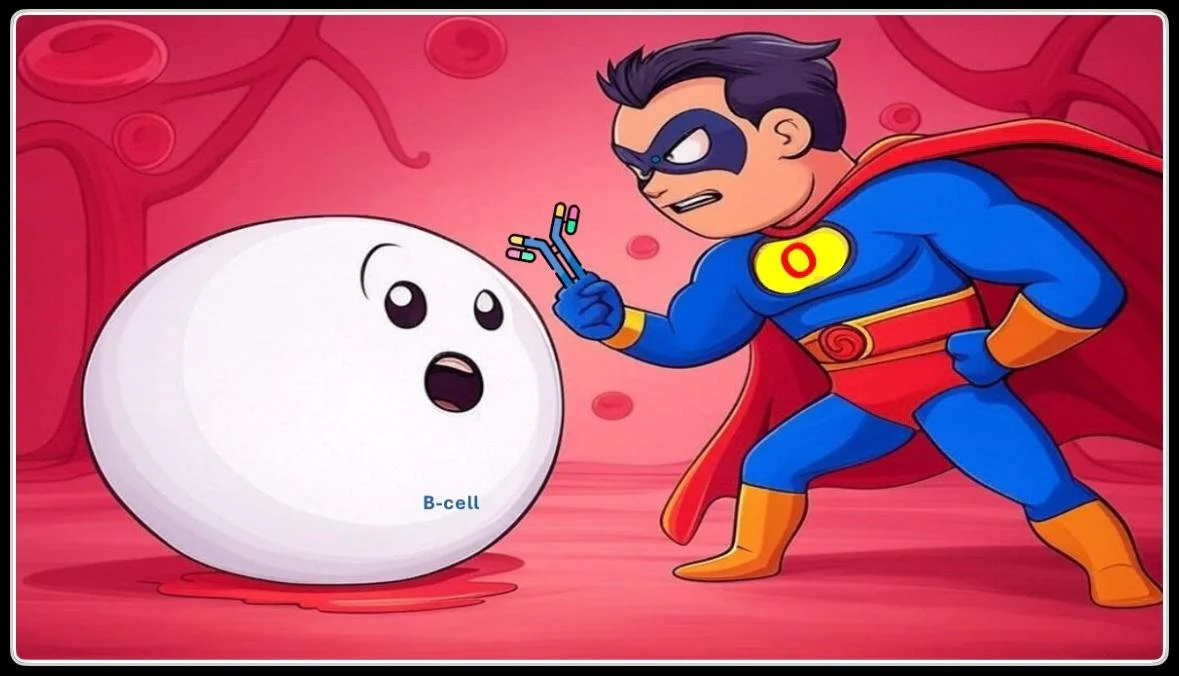Here are the official #NephJCKidneys nominations. It is time to vote and pick this year’s winers.
ADPKD Patient Perspective
Cryo EM, PKD Protein structure: A Video Explainer
The Structure behind the Function: Unravelling PKD by CryoEM
The #NephJCKidneys are rolling up nominations.
Twitter Journal Clubs
Appendix 2 of the NephJC Primer on Twitter Journal Clubs contained a list of all known twitter journal clubs. This information used to be stored on the Wikipedia page on journal clubs, you can see it in the history. But Wikipedia, home of a comprehensive list of English Canadian game shows (we are not kidding, see French list here), did not think a list of Twitter journal clubs was encyclopedia worthy. So we are recreating the list here as a Google Sheet. Have at it.
Statistical modelling, model fitting and BIC for dummies
Mesoamerican Nephropathy the visual abstract
Aakash Shingada has done it again with another smashing visual abstract.
MesoAmerican Nephropathy: More Light on the Heat Hypothesis?
They're back: The NephJC Kidneys
Introducing the NephJC Primer on Twitter Journal Clubs
In the tradition of Andrew Ibrahim’s Visual Abstract Primer, NephJC is proud to announce the NephJC Twitter Journal Club Primer. We have been working on this for about 4 months and think it’s pretty good.
The Primer is intended to be a living document and the latest version will always be hosted here.
Feel free to tweet feedback.
Antibiotics and Kidney Stones, the visual abstract
Another smashing visual abstract by the NSMC crew. This one is by Sri Lekha Tummalapalli.
Antibiotics are bad, the Stone Edition
The #NephJC party at Kidney Week
Free Pre-Kidney Week ASN Forum for Emerging Kidney Physiologists
Apixaban or Warfarin in Atrial Fibrillation, the Visual Abstract
Sarah Gleeson has made a wonderful Visual Abstract for this week's NephJC
Atrial Fibrillation, Anticoagulation and Dialysis: Do We Finally Have A Better Option?
Law 1: When @Kidney_Boy learned about Bayesian Statistics
Law 1: A strong intuition is more powerful than a weak test
law 3: Mostly Wrong
Law 3: For every perfect medical experiment, there is a perfect human bias.
The brevity ofThe Laws of Medicine makes it more powerful. The book can be devoured in a single morning, but the reader will still be left profoundly impacted.
Dr. Siddhartha Mukherjee challenges the reader to go beyond contemplating the three laws that make up the book, but to conceive and open one's eyes to other Laws. Today, with an expanding data-driven world, we discount our humanity. From the author’s note:
“It’s easy to make perfect decisions with perfect information. Medicine asks you to make perfect decisions with imperfect information.”
This imperfect information is then processed through the imperfect spectacles of the human mind.
In 1954 Dr. Richard Asher wrote that we are men of action, but every action is, and ought to be, preceded by a certain amount of thought. We should carefully examine these thought processes as they can be faulty. Dr. He says that crooked or dishonest thinking can occur in medicine & classifies crooked thinking in medicine under therapeutics, statistics, causes, words, etc. He says that the concept that a statistical relationship between two things automatically implies a causal relationship between them is “perverse.” He points out, for example, that statistics would show the incidence of erythroblastosis foetalis is twenty times less common in children of opium smokers. However, this should not obviously lead to prescribing opium in the maternity ward. These types of causal relationships are among our human biases that have existed from well before Dr. Asher’s publication over sixty years ago, and are present in today’s medical practice as stated in Law 3.
Law 1: a strong intuition is much more powerful than a weak test, and Law 3 are closely related. Law 1 can be paraphrased as “every diagnostic challenge in medicine can be imagined as a probability game.” Probability is based on objective factors such as prior organ damage and testing, but also the physician’s history taking, instincts, and interpretation of the data. One of my favorite passages in the book is when Dr. Mukherjee quotes Dr. Bernie Fisher: “In God we trust. All others must bring data.” However, being human, our biases can change the lens through which all this data is examined. If the data collector is flawed, does that not mean his accruement, analysis, and interpretation of the information is flawed? How do we account for this? Dr. Mukherjee says that reading a study inherently introduces human perception, arbitration, and interpretation – and hence involves bias. Bias is not only limited to research and those reading and analyzing the study. What bias can the subjects of the study introduce? One should consider the possibility of the Hawthorne Effect- when a human knows they are being observed, behavior changes. How do we account for these biases?
What about making medical decisions? Often complex decisions are made using mental heuristics and shortcuts to reduce complexity. These shortcuts develop over time with experience and increased knowledge in the field. Biases however, particularly cognitive biases, can easily creep in. While in medical school, I would hear of a symptom, or learn of a treatment, and try to apply this to all similar clinical situations (anchoring bias). Even experienced physicians are susceptible to similar biases. How often do we ask what is the data for established treatments? Sodium polystyrene sulfonate (Kayexelate) was approved based on two studies that barely deserve the name studies (no controls, confounders such as low K diet, diuretics, and other drugs that lower potassium). In 2011, the FDA issued a warning that Kayexelate was associated with colonic necrosis. For over fifty years Kayexelate was used without much consideration until there were significant complications in patients. Did the fact that Kayexalate was approved and was an old drug allow this complication to be overlooked for so long?
This brings me to the practice of evidence based medicine (EBM) and guidelines. In 1996 Dr. Sackett defined EBM as “the conscientious, explicit, and judicious use of current best evidence in making decisions involving the care of an individual patient. It integrates individual clinical expertise with the best available clinical evidence from systematic research.” How does this evidence come about? One thinks of a clinical question and the important outcomes to measure. The results are analyzed, and if found to be “good,” used in evidence based care. This evidence is often used to deliver a doctor-defined patient agenda. A medical encounter takes place and the health care provider focuses on what choices need to be made and carried out for the patient.
Has the research and medical decisions incorporated the patient? Did the research take into account the experience of their subjects? These questions are at the core of the movement to expand Patient Reported Outcome Measures (PROMs) and Patient Reported Experience Measures (PREMs) in our research agendas. We also must remember that EBM looks at the care of populations as opposed to individual patients. Dr. Shyaan Goh, an Orthopedic Surgeon from Australia, wrote to the British Medical Journal that the clinicians are the problem when EBM adversely affects clinical judgment. The clinician might not account for the quality or applicability of the evidence; they might not understand the rationale behind a guideline and not properly observe the guideline.
The question asked throughout this commentary is how do we account for these biases? How do we guard ourselves from allowing our own human instincts that may lead us astray? I think it is imperative to focus on the central figure of the story, the patient, not the health care provider. We have to take into account the individual who is experiencing the illness- what are their goals and expectations? A patient is not just a series of questions and tests.
As for the clinicians themselves, what other advice might be helpful? Well, Dr. Asher implored us to keep on the path of straight-thinking, regardless of the destination, to avoid crooked thinking. He quoted Rudyard Kipling’s Elephant’s Child to provide us with “helpers” to achieve this end:
“I keep six honest serving-men,
Their names are What and Why and When
and How and Where and Who.”
Maybe we should consider having these six helpers at our side aiding us to “hunt” and bring our biases to the forefront. Then, as Dr. Mukherjee says, we can confront bias head-on and incorporate it into the very definition of medicine.
Commentary by Beje Thomas, Nephrologist
NSMC intern, class of 2018
Additional Reading:
- Asher R. Straight and crooked thinking in medicine. BMJ 1954;2:460.
- Lehman Richard. Siddhartha Mukherjee’s three laws of medicine. BMJ 2015; 351 :h6708
- Accad, M. and D. Francis. "Does Evidence Based Medicine Adversely Affect Clinical Judgment?" BMJ (Clinical Research Ed.) 362,
- Greenhalgh T et al. Six ‘biases’ against patients and careers in evidence-based medicine. BMC Med 2015;13:200
- Goh S. The Problem with Evidence Based Medicine is really the Clinicians. (Letter to the editor). BMJ. 2018 July 18
- Sackett DL, Rosenberg WM, Gray JA, Haynes RB, Richardson WS. Evidence based medicine: what it is and what it isn’t. BMJ. 1996;312:71–72. doi: 10.1136/bmj.312.7023.71.



















